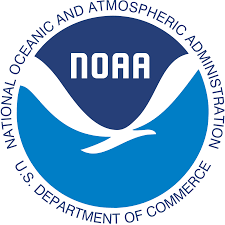NOAA’s Report On California’s Salmon And Steelhead Habitat
If you have some time, here’s an interesting (and long) read the National Oceanic And Atmospheric Administration released the history of salmon and steelhead habitat loss in the Central Valley.
Here are some highlights:
Present Day Salmonid Habitat
Presently, salmonids are restricted to the Sacramento River and San Joaquin River valley bottoms and a few of the lesser tributaries. The beautiful, productive upper reaches of the rivers have been removed from the fishes’ current range. All of the black lines on the map at right, representing historical habitat, are inaccessible. By every account, this is 80% of the fish habitat (Lindley et al., 2006) and 95% of the spawning habitat (Yoshiyama et al., 2001).
Additionally, dams have significant effects downstream as well. Not only do they block access to habitat, they also alter water flow and temperature downstream. And many limit the amount of proper spawning gravels that are available below the dam.
———————————————
“Did salmon ever enter Yosemite Valley?”
Yoshiyama et al. (CDFG Fish Bulletin 179)found that “..It appears, therefore, that salmon at one time and in unknown numbers may have approached the vicinity of Yosemite Valley, even if they did not enter the valley proper. However, for the present, the area around El Portal or just downstream of it may be the best estimate of the historical upstream limit of salmon in the mainstem Merced River…”
The San Joaquin River historically supported great numbers of salmonids, “Fifty or sixty years ago (1870’s), the salmon in the San Joaquin were very numerous and came in great hordes.” (Clark 1929) Most spawning by spring-run Chinook salmon in the San Joaquin River occurred upstream of the current location of Friant Dam. Historical spawning runs may have exceeded 200,000 fish annually, ascending the river as far as Mammoth Pool (about 3,000 feet in elevation), which lies about 50 miles above Friant Dam. (San Joaquin River Restoration Settlement)
However, by the late 1940’s all salmon runs in the San Joaquin River above the confluence of the Merced River were gone.
Since Friant Dam became fully operational in the 1940s, much of the river’s water has been diverted for off-stream agricultural uses. As a result, approximately 60 miles of the river bed is dry in most years. The photo at right is the San Joaquin River(Friendsoftheriver.org).
—————————-
Here are some tidbits on the Feather River, which has struggled to maintain its water level and is featured in this month’s issue of California Sportsman:
In 1929 Clark described that Spring-run Chinook salmon historically ascended to the very highest elevation headwaters of the Feather River watershed prior to the construction of numerous hydroelectric power projects and diversions. They migrated up all four major branches of the Feather River.
Per Clark, “The runs of salmon, both spring and fall, used to be very heavy in the Feather River previous to the building of obstructions. It is true that the mining operations in the early years may have reduced the amount of fish somewhat, but the building of dams has almost destroyed the spring run. The fall run is large, although not extremely abundant,..”
The Feather River Hatchery, located at the town of Oroville, was built by the California Department of Water Resources to mitigate for the loss of upstream spawning habitat of salmon and steelhead due to the building of Oroville Dam.
If you’re a history nerd like I am, check it out.




